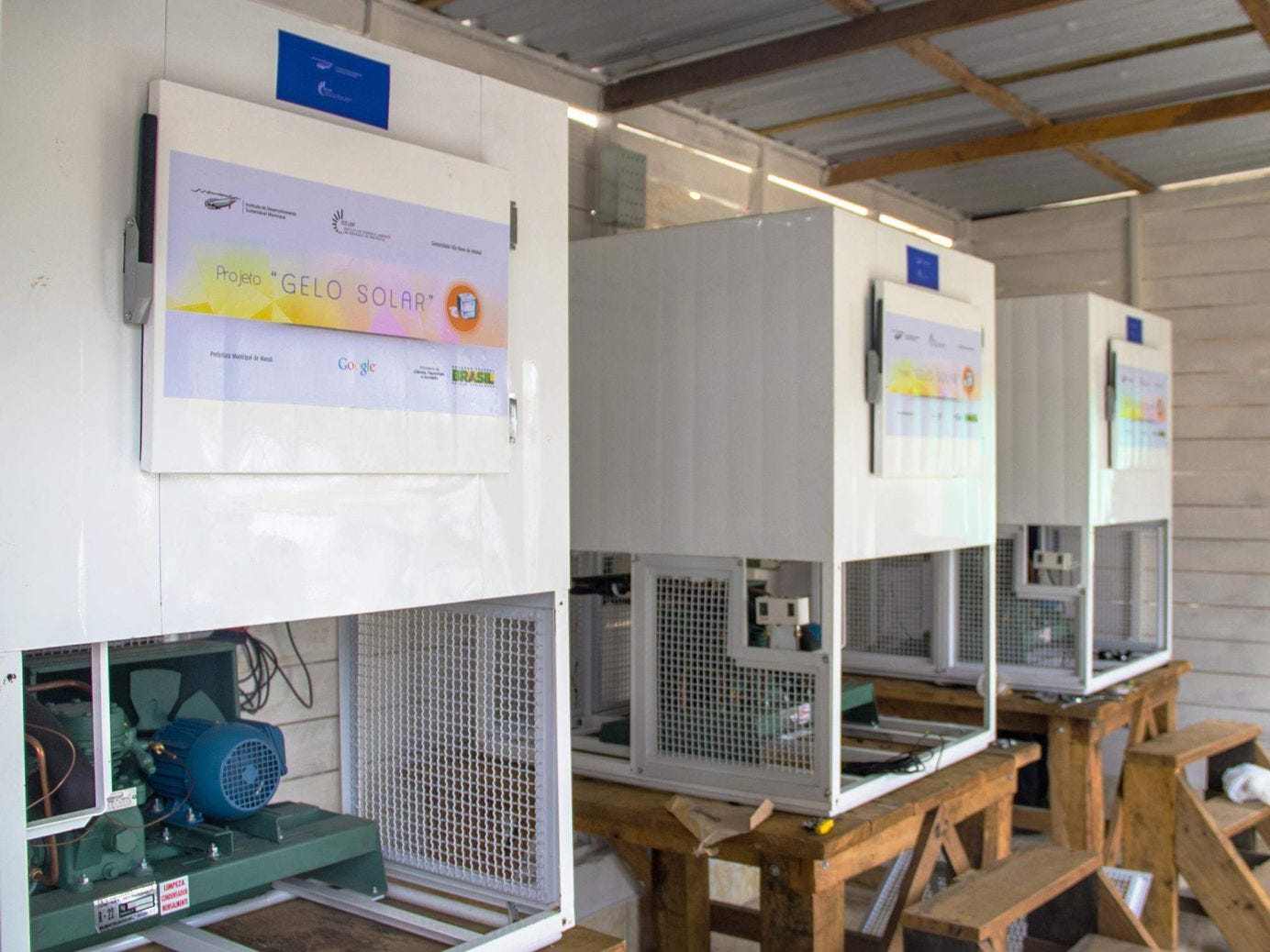Hello folks, and welcome back to the Social Life of Energy, the newsletter for people who want to get smart about sustainable energy transitions.
Not in the loop yet?
I have written before about energy as a “sociotechnical system”. It remains a perplexing question: how to understand the ways in which we as humans relate to our material – electrified and otherwise powered – world and how we relate to each other through this material world. We tend to operate with deeply rooted ideas about what ‘technology’ is, and these roots go back to times before we had time to take a step back, reflect and properly reconsider them. To name but one simple example: we tend to treat technology as something in and of itself (a tendency the compound ‘sociotechnical’ is in fact supposed to counter). As long as we do though, its social reality will keep tripping us up.
In that spirit, I’d like to introduce the final edition of ‘Lessons from the History of Anthropology for the Future of Sustainable Energy’, which I promised you at the end of 2019. Our University of Amsterdam course on the History and Theory of Anthropology closed with a discussion about the latest tradition to exert its influence on the anthropological imagination: Science and Technology Studies. In this field, scholars have concerned themselves with questions of how scientists arrive at and corroborate knowledge about the world, how that knowledge is embedded in ‘technology’, and subsequently how we live with that technology. Precisely the sort of questions, then, that can help us unsettle some of those deep-seated ideas!
Unsettling ideas is also one way anthropologists like to make themselves useful, so unsurprisingly, those anthropologists who picked up on STS tend to work in the long line of interrogating the possibility of anthropology knowledge. Some work to specifically unseat ‘Western’ (scientific) ways of knowing and classifying the world, others latch on the idea that if reality is a river that tends to flood even our highest technologically enhanced senses (and you can only step in it once), then our knowledge-making is bound to be messy.
The kind of STS I’d like discuss today falls more in that second strand. The key idea here is that knowledge is always “situated”, which means that what we understand a ‘thing’ to be (say, race, or woman), shifts subtly or not so subtly with the context in which we encounter or work with that thing. Paying careful attention to these shifts can make us aware of how we come to know the world and alert us the possibility of misunderstanding, when people (say, a product designer and a user) think they are talking about the same thing but in reality, they are not.
So, let’s go on a little deconstructive adventure and ask ourselves: what are the categories by which we think we understand the energy system?
What is a heat pump?
Nyborg and Røpke’s (2015) history of the heat pump in Denmark reveals the complex technological, political, and institutional conditions (‘situation’) for its diffusion. It was originally brought to market by electricity companies, with the support of the ministry, as a way to cut back on consumption and become more independent from oil. That made it suspicious to an increasingly influential pro-renewable energy movement. They saw the heat-pump as an energy efficiency technology that would only bolster the ‘black’ energy system. Its manufacturers tried to frame it as solar energy (does not the sun heat the water?), but to no avail. In the meanwhile, district heating and the newly found natural gas that fuelled it, proved mean competitors.
The heat pump languished until energy independence made way for sustainability. This time, it was reconceived as a ‘flexible’ technology perfect for the need to balance the influx of renewable energy into the grid. Its relation to the (all new! smart!) electricity system now made in into a clean technology, instead of a dirty ally to the ‘black’ energy of old. (And as it turns out, it could even be compatible with district heating!)

Heat pump sales in Europe until 2017. France is leading the way in hot air. Stats by EHPA.
Challenges remain, especially because of its complex nature (compared with say, the PV panel). It is difficult to get reliable installations and pesky consumers have the tendency to mess with it. Apparently, these ‘consumers’ like to tinker and generally play some active part in the energy transition. Annoying!
What is a consumer, anyway?
Turns out, policy-makers and energy professionals often don’t quite know what to do with these active consumers. Consumers should be like heat-pumps, whose energy consumption can be adjusted according to the capacity of the grid. But alas, they are not. Perhaps these ‘end points’, a.k.a. ‘load units’, can be triggered to change with financial stimuli? Bah, probably not, households are really quite inflexible. Basically, “consumer flexibility” is the window of opportunity that occurs at the moment of buying a smart energy subscription plan.
Too harsh a depiction of utilities’ thinking? Damn straight, say Schick and Gad (2015) (my paraphrase). Policy-makers, managers and engineers do want to reflect on and re-think all this. Consider this smart-grid strategist:
Everybody agrees that consumers are important, but nobody actually attempts to characterize consumers and their potentials more specifically “because it is so terribly difficult [...] nobody has a clue how to embrace and engage consumers” (56).
Luckily, we have social professionals too! They have gathered plenty of evidence that consumers can be interested by something others than dolla signs, and can be engaged with energy itself, for example, in an effort to make their lifestyles more sustainable.
It’s all about context. And that means that no one model fits all. And that means utilities and policy makers would do well to bring professionals attending to the social together with professionals who attend to the technological from the get-go. (This should also be a call to project funders, who should inscribe the social into the primary work packages.)

Eco-conscious consumer. You can recognize them by the barely surviving plants and paintings of barren trees in their homes. Well spotted by Katerina Limpitsouni.
What is a network?
Sometimes people have enough of utilities, and strike out on their own. Schoor et al (2016) tell the story of a unique arrangement of cooperative energy in the Netherlands: a bunch of local cooperatives banded together in three regional cooperative networks. Each network then became a founding member of a profit-for-purpose energy provider. For every customer, provider remits money to the cooperative, which it can then spend on local sustainability or energy initiatives.

Wierum in Fryslân also participates in the cooperative network Ús Koöperaasje.
This is a clever kind of network of networks, where fees for energy services get recycled into the commons, but, as in the previous cases, money itself is not enough of an argument. These cases show that in order to be a successful cooperative, your work needs to be highly localized. Thus, in one region, volunteers observe it can be quite difficult to decide how to spend that money, when several villages belong to the same cooperative (99). Lives are too far apart. Another cooperative knows it cannot focus only on energy, because it would risk them being dismissed and marginalized as a ‘green organisation’. (100). So they also take on social and economic issues.
What a network is and does therefore differs depending on the relative ‘level’ at which it operates. That is a great illustration of a point also made in this podcast, to create a more democratic energy system you need to work at different (national, regional, local) levels at the same time. Work at each level can reinforce the other.
What is ice?
We leave the low lands of the North to sail into floodplains of Central Amazonia. Access to electricity there has long been precarious, and so fridges or freezers are all but absent. Ice is important to store agricultural produce, meats, and fruits from the forest. Gas powered generators compensate somewhat for the grid, but they are expensive and not environmentally sustainable. People sometimes buy from local factories, but it is expensive and time-consuming. Maybe, the folks from Social Technology thought (ST is a fork from Appropriate Technology), if we can facilitate the solar powered production of ice, we can enhance storage and boost the local economy? Enter the Solar Ice Machine.

Solar Ice Machine. Photographed by Amanda Lelis for Saveur.
Was it successful? Well, it turned out it was pretty successful in making a refreshing drink of water! More than anything, that’s what people used it for (not for storage). As Menezes et al (2020) explain, success depends on what people want to do with a product, including things the designers had not thought about, and on whether developers can subsequently provide support to facilitate or enhance that use case. That’s why the authors advocate for developers to, in Rob Van Winkle’s wise words, “stop, collaborate and listen” when you come up with a brand new invention, or what Menezes et al call: being flexible. Only flexibility allows everyone to make the product “successful”. “Failure”, as a consequence, is not definitive, but merely as a moment in a process.
If you’re doubting about the moral of this story of STS in anthropology, let me spell it out with the help of these two anthropologists: the spirit of STS is to stay open to the surprise that people put things together differently than what you are used to. The world may look a little messier, but a lot more interesting too.
That concludes the History of Anthropology for the Future of Energy. I hope y’all enjoyed it (heart it if you liked it) and if you can’t get enough of it, let me know (I might be open to the possibility for a bonus edition), and see the end of the newsletter for an overview of your favourite issues.
Take care, stay flexible and till next week!
Sources
Menezes Penteado I., do Nascimento A.C.S., Correa D., Gomes M.C.R.L., et al. 2019. "Among people and artifacts: Actor-Network Theory and the adoption of solar ice machines in the Brazilian Amazon". Energy Research and Social Science. 53: 1-9. https://doi.org/10.1016/j.erss.2019.02.013
Nyborg, Sophie and Inge Røpke. 2015. "Heat pumps in Denmark—From ugly duckling to white swan". Energy Research & Social Science. 9: 166-177. http://dx.doi.org/10.1016/j.erss.2015.08.021
Schick, Lea, and Christopher Gad. 2015. "Flexible and inflexible energy engagements—A study of the Danish Smart Grid Strategy". Energy Research & Social Science. 9: 51-59. http://dx.doi.org/10.1016/j.erss.2015.08.013
Schoor, Tineke van der, Harro van Lente, B. Scholtens, and A. Peine. 2016. "Challenging Obduracy: how Local Communities Transform the Energy System". Energy Research & Social Science. 13: 94-105. http://dx.doi.org/10.1016/j.erss.2015.12.009
Previous issues in the series “Lessons from the History of Anthropology”
Be ye transformed by renewable energy (lessons from Foucault)
The gender of renewable energy (lessons from feminism)
A Global Green New Deal (lessons from Marxism)
The Symbolic Life of Energy (lessons from British symbolic anthropology)
Everything is connected (lessons from structuralism)
The energy system (lessons from structural functionalism)
Where does the power of community energy come from? (lessons from The Gift)
(R)evolutionary change (lessons from evolutionism)


